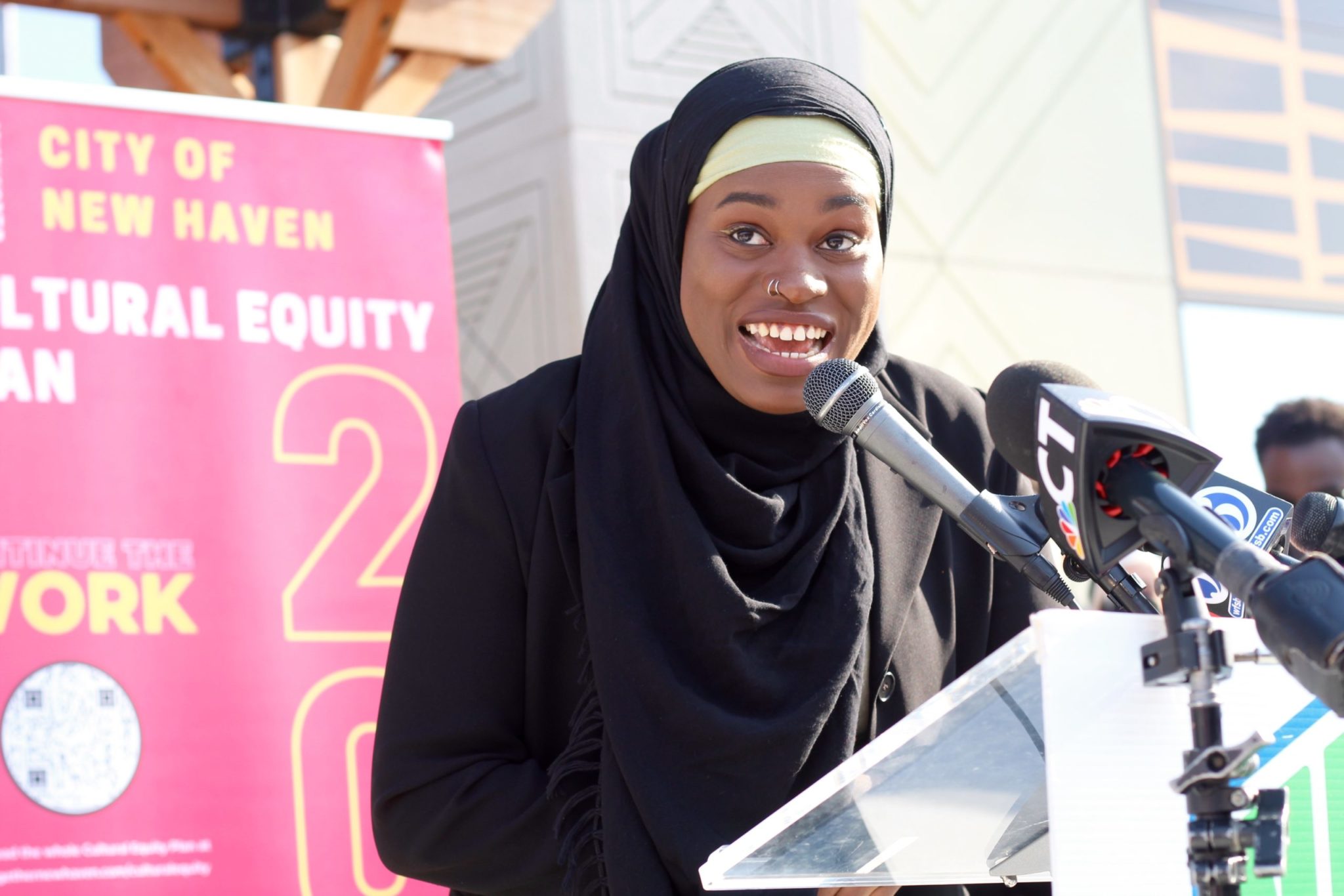City unveils sweeping Cultural Equity Plan
The plan includes funding historically unsupported artists and committing to reparations frameworks for Black and Brown neighborhoods.

Courtesy of Lucy Gellman
New Haven will seek to redistribute wealth and address centuries of exploitation by amplifying the voices of artists from marginalized communities through its new Cultural Equity Plan.
On Jan. 13, the Department of Arts, Culture and Tourism unveiled the plan in front of the Dixwell Community Q House. A team of New Haven creatives, activists and residents led by Department Director Adriane Jefferson have been developing the plan for two years. The 59-page document details the city’s motivation for developing the plan and a slate of action items. The plan is also interactive — it invites the reader to digest the material by actively recording their thoughts on the document. It seeks to mobilize immediate action against arts inequity, setting ambitious goals for coming years.
“Historically, there’s a group of organizations that get the bulk of the city’s funding,” said Hope Chávez, director of artistic planning at Long Wharf Theatre. “There’s limited funding available for arts and culture in New Haven and so what is available seems to go to institutions. So we talked a lot about racial inequities and wanting to shift BIPOC folks and folks in the queer and trans communities to the center.”
These inequities are tied to allocation of resources, representation and accessibility of opportunities, Chávez said. To address these issues, the plan aims to redirect funding to individual artists or historically marginalized collectives rather than established institutions. The team behind the plan specifically wants to make direct funding available to artists without making them “jump through hoops.”
The plan calls for redistributions of wealth and power through the creation of a new citywide Cultural Equity Accountability Team and through funding neighborhood cultural organizers. Beyond that, the document calls on the city to commit to a reparations plan for Black and Brown neighborhoods, to embed community perspectives in future infrastructure decisions and to incorporate traditionally unsupported cultural histories into the New Haven Public Schools curriculum.
The plan also urges New Haven to continue lobbying Yale to “pay its fair share.” Yale needs to do its own work to rectify its own cultural equity issues, said Daniel Fitzmaurice, executive director of the Arts Council of Greater New Haven.
The intention to create the plan coalesced when Adriane Jefferson became the director of the Arts Department in February 2020. The plan’s development timeline directly overlapped with the pandemic, which both slowed and galvanized the development process, Fitzmaurice said.
The city assembled a team with a diverse array of cultural identities to author the plan. They wanted to create a group that was representative of all the various communities in New Haven, including people who identify as culture makers, such as artisans and craftspeople, Chávez said. The co-creation team was interdisciplinary, class-intersectional and demographically diverse, Jefferson noted.
The team began the process by discussing, brainstorming and reflecting on inequity issues, and then enlisted public opinion. According to Jefferson, it was imperative to ground the document in the community’s specifically identified needs.
“Once we moved from conversation to implementation, we facilitated community listening sessions,” Chávez said. “Some others went out, man-on-the-street style, and talked to people all around New Haven in different neighborhoods to survey them on their understanding of cultural equity and what they wanted to see in a plan.”
They also held focus groups for the AAPI and Hip Hop communities, as those groups were especially underrepresented at town hall meetings, Jefferson said.
According to Elizabeth Nearing, facilitator and member of the Civic Impact Lab, the plan was formatted in an interactive style — including prompts for the reader — in order to embed accessibility and collaboration into its physical form, which mirrors the objectives of the plan.
“We asked, how do we build a document that reflects the values of this process?” Nearing said. “How can the people who hold this in their hands also be a part of it? How do we create belonging with the very nature of the document? We wanted readers to have the power to make shifts, so providing a way for folks to interact with this document felt essential.”
The plan is intended to encourage learning and reflection, Jefferson said, but is only the beginning of a long process of reforming and improving existing systems.
“Be open to transformation and learning and be willing to extend resources,” Jefferson said. “Right now the leadership is changing in the Arts in New Haven, and the way Cultural Affairs is defined is changing. With these changes needs to come more resources, more support, and more transformation.”
The Department of Arts, Culture and Tourism is located in City Hall at 165 Church St.







